Sunsets of Outback Queensland
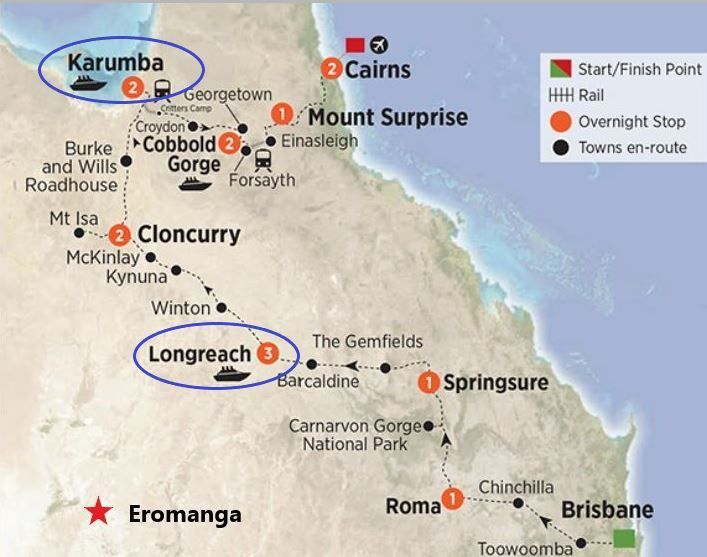
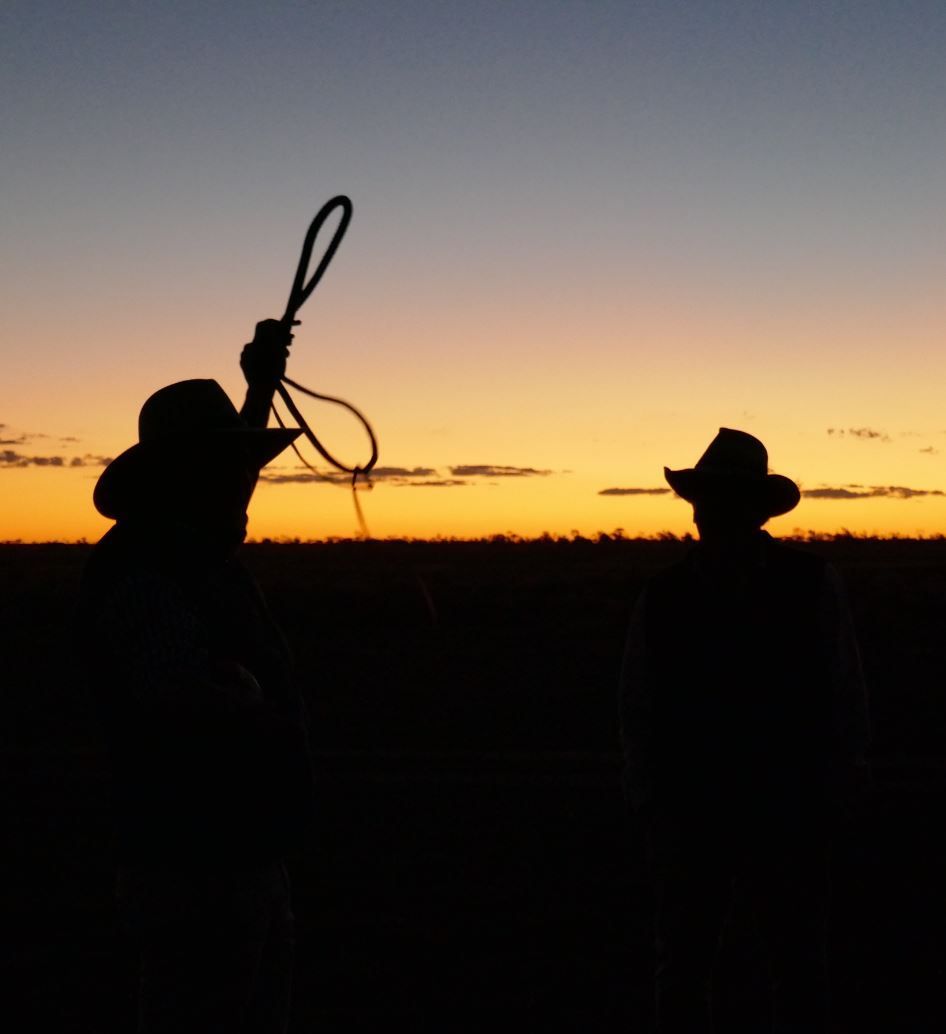
During my 2 week tour of Outback Queensland, we were promised some wonderful sunsets and they certainly were fabulous. Longreach (marked on the tour map above) is known for wide bands of horizontal clouds which we saw as we headed to Camden Park for sundowners.
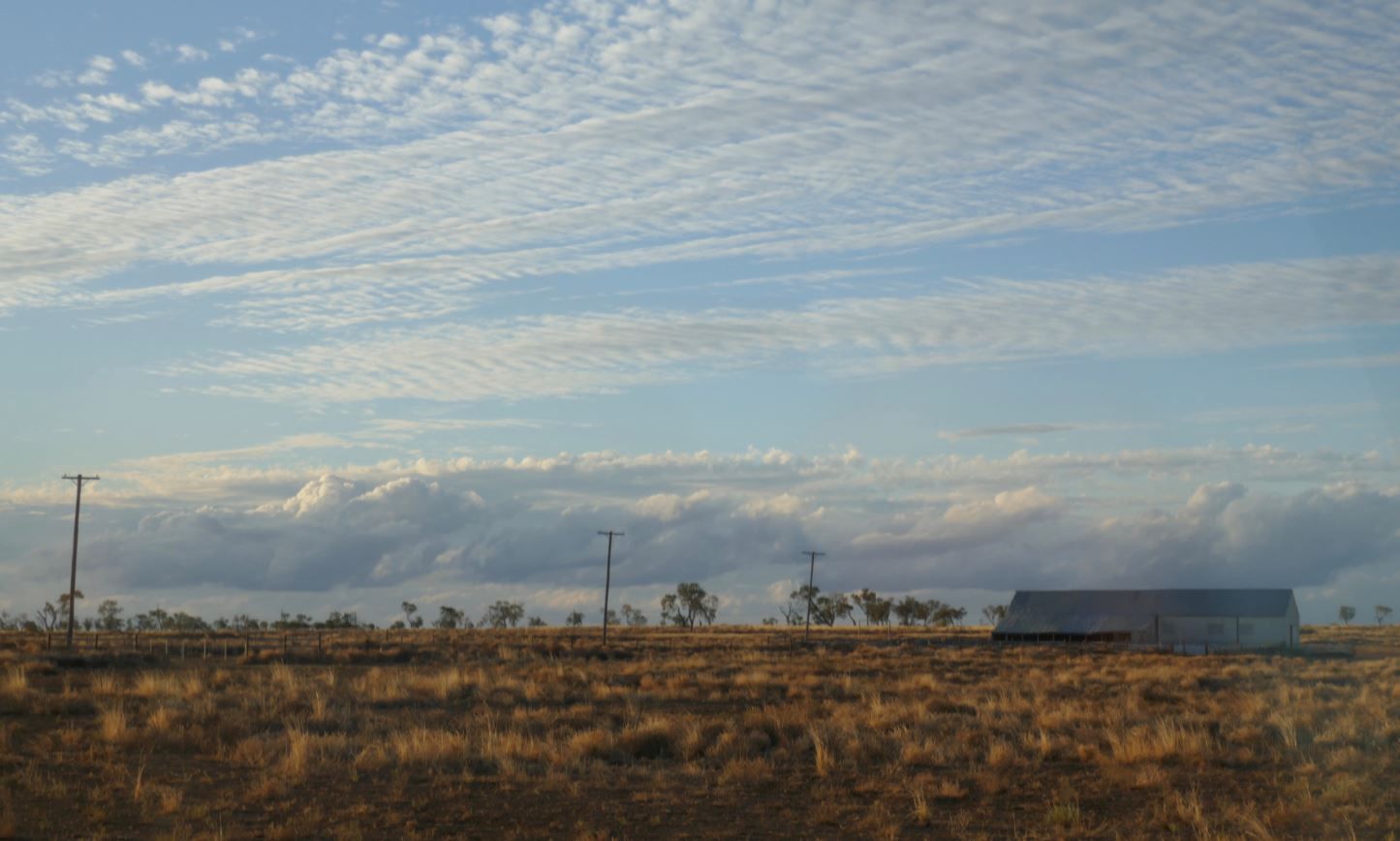
Camden Park is a large cattle and sheep station. Dan Walker was our host, the grandson of the original owner. These days diversification is the key and goats are now bred for the meat market while a huge area is now covered with 55,000 solar panels, enough to power 9,000 houses annually. The Queen visited twice, in 1970 as part of an extensive Australian tour and in 1988 as part of her official program to open the Stockmans Hall of Fame, in Longreach.
Dan regaled us with a wealth of tales as we drove through the property. At the sheep shearing shed a gaggle of children followed us. Dan asked What are you doing here? They replied, we thought you had food! Each child boarded the coach and used the microphone to introduce themselves; their only reward a sweet from our lolly stash. We headed to 2 tree hill for our sundowners, welcomed by Dan’s parents, David and Lynn. Wonderful folk and easy to chat with, as we enjoyed a fabulous sunset.
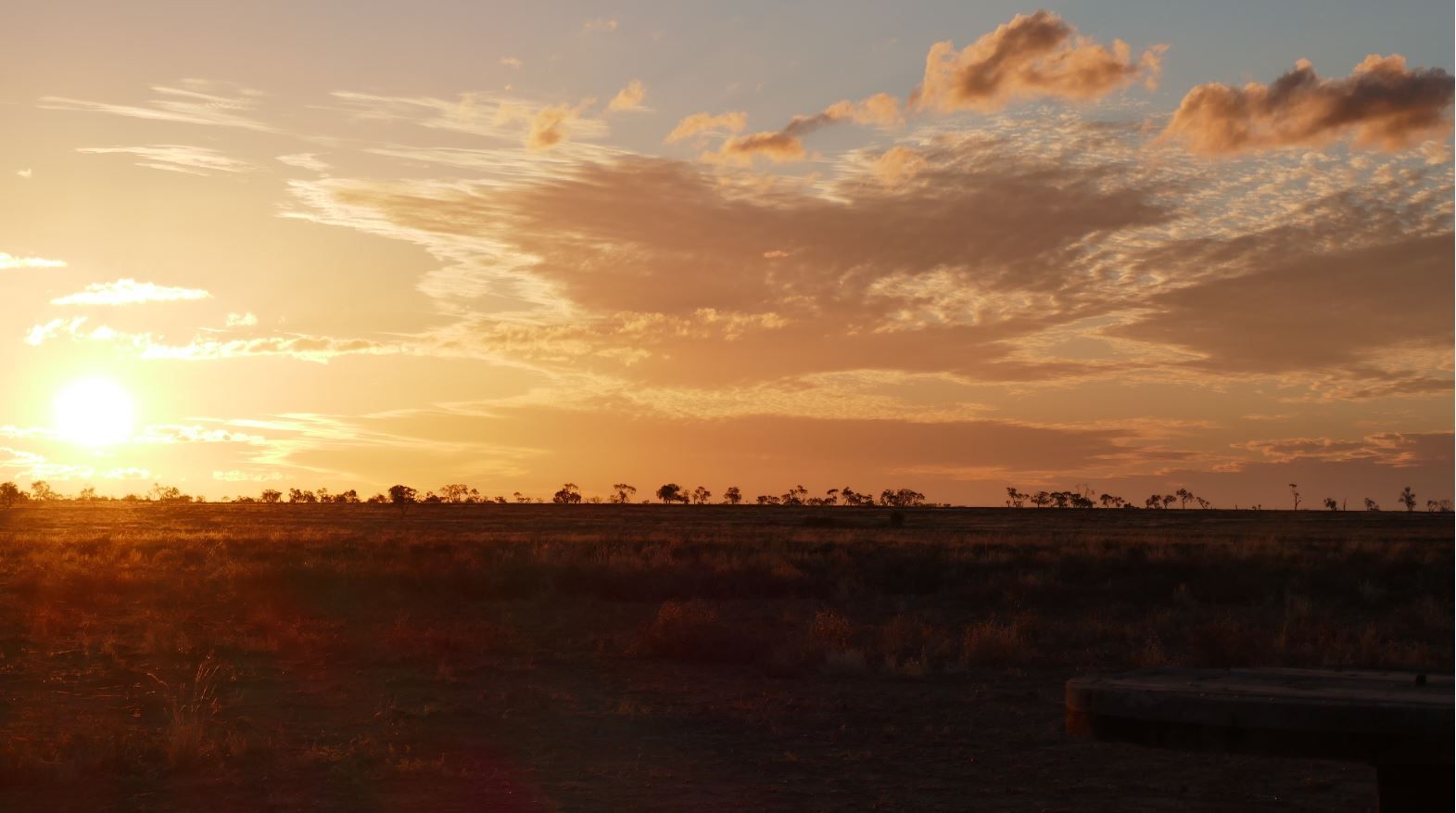
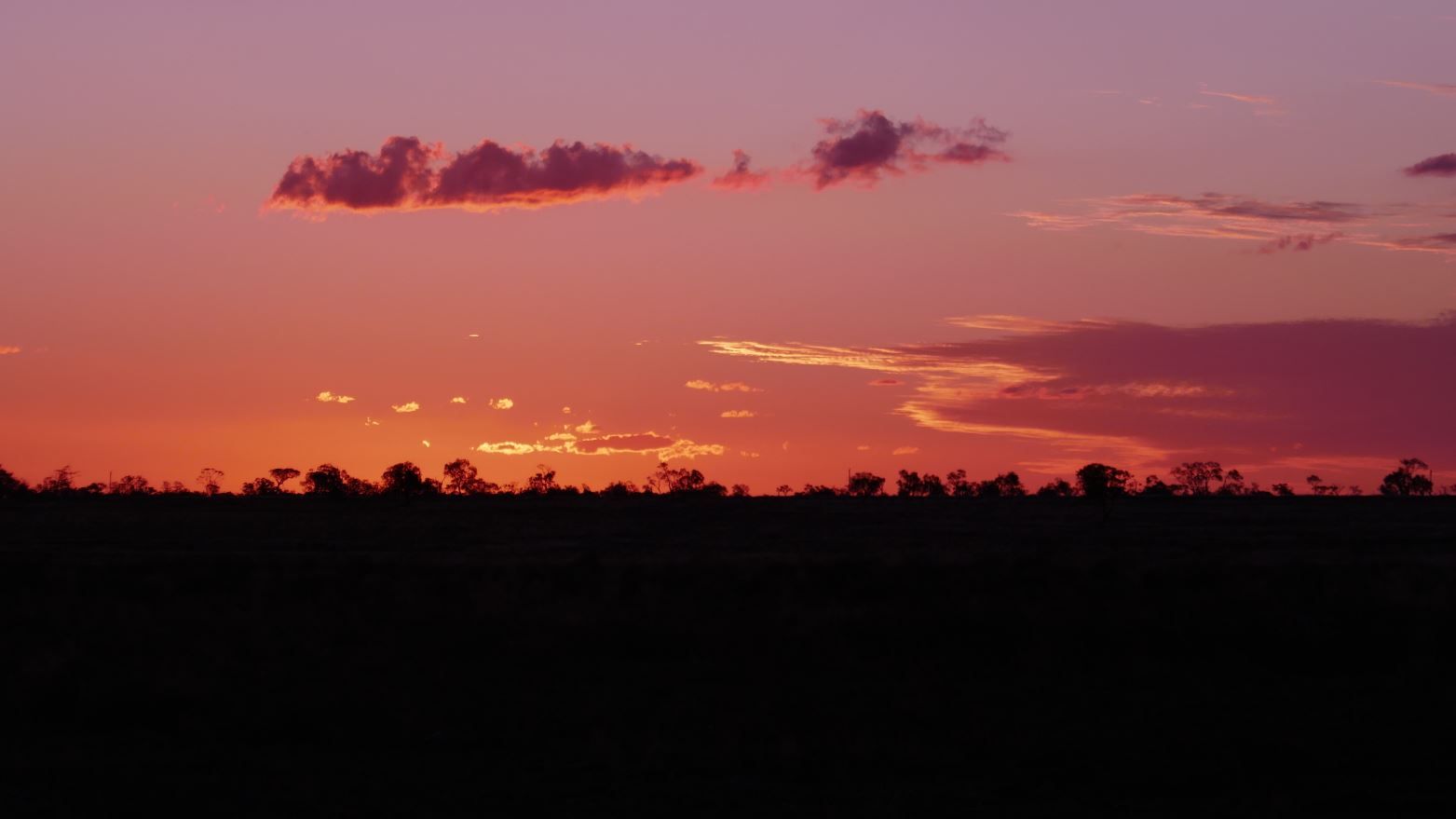
As we departed the kids were back, thrilled to finally find food - our leftover canapés, which they demolished quickly waving enthusiastic goodbyes.
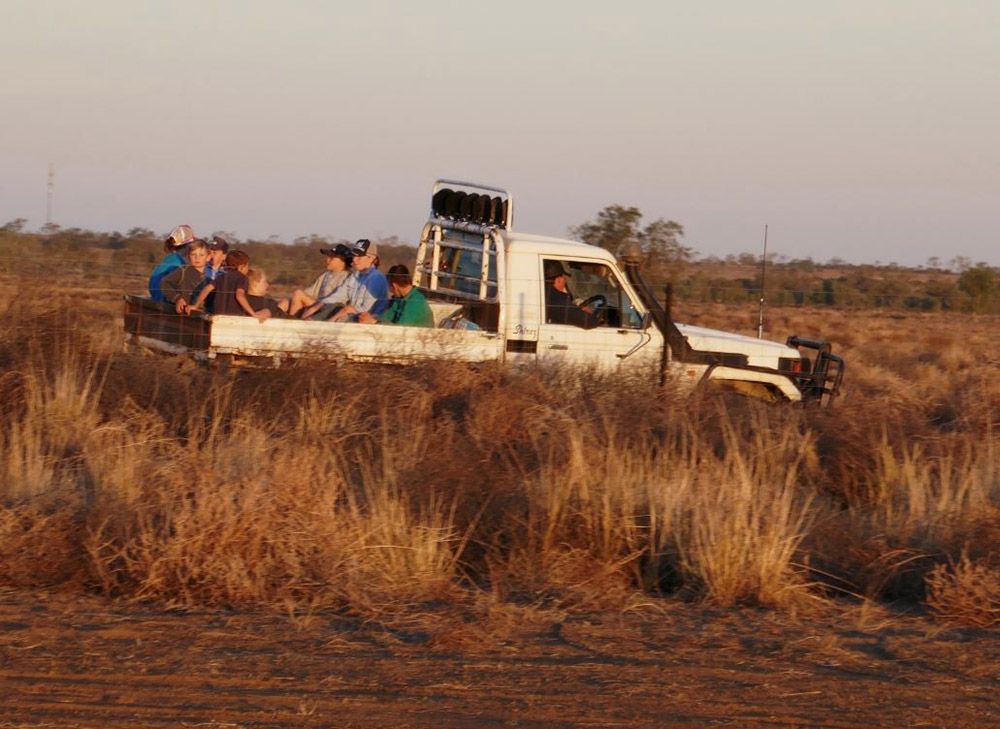
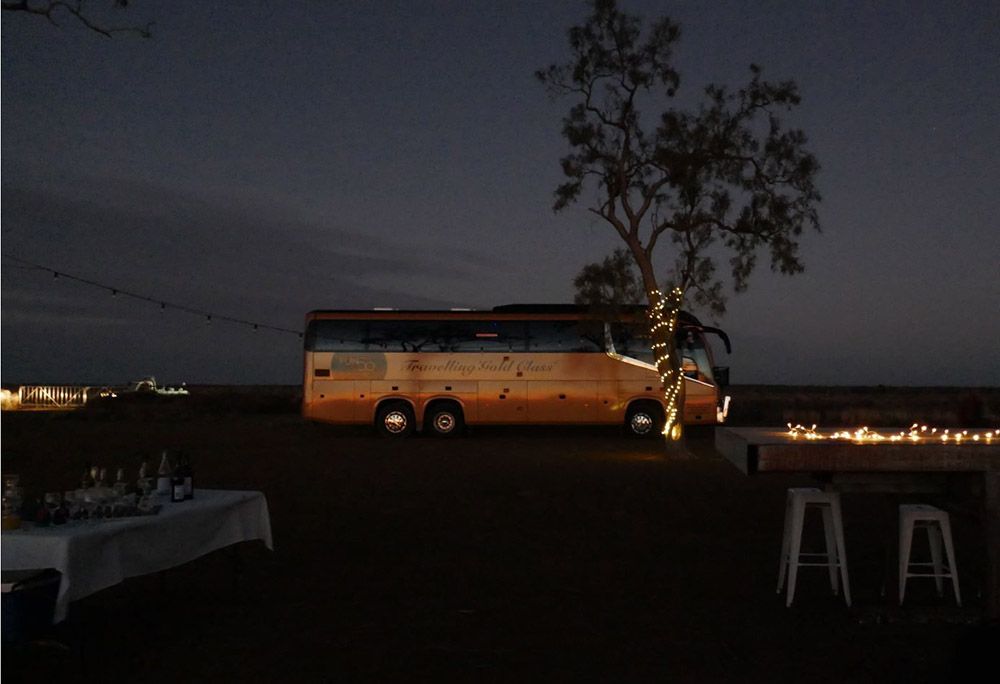
The following night we enjoyed a cruise on the nearby Thomson River. Not too many clouds but still an atmospheric sunset.
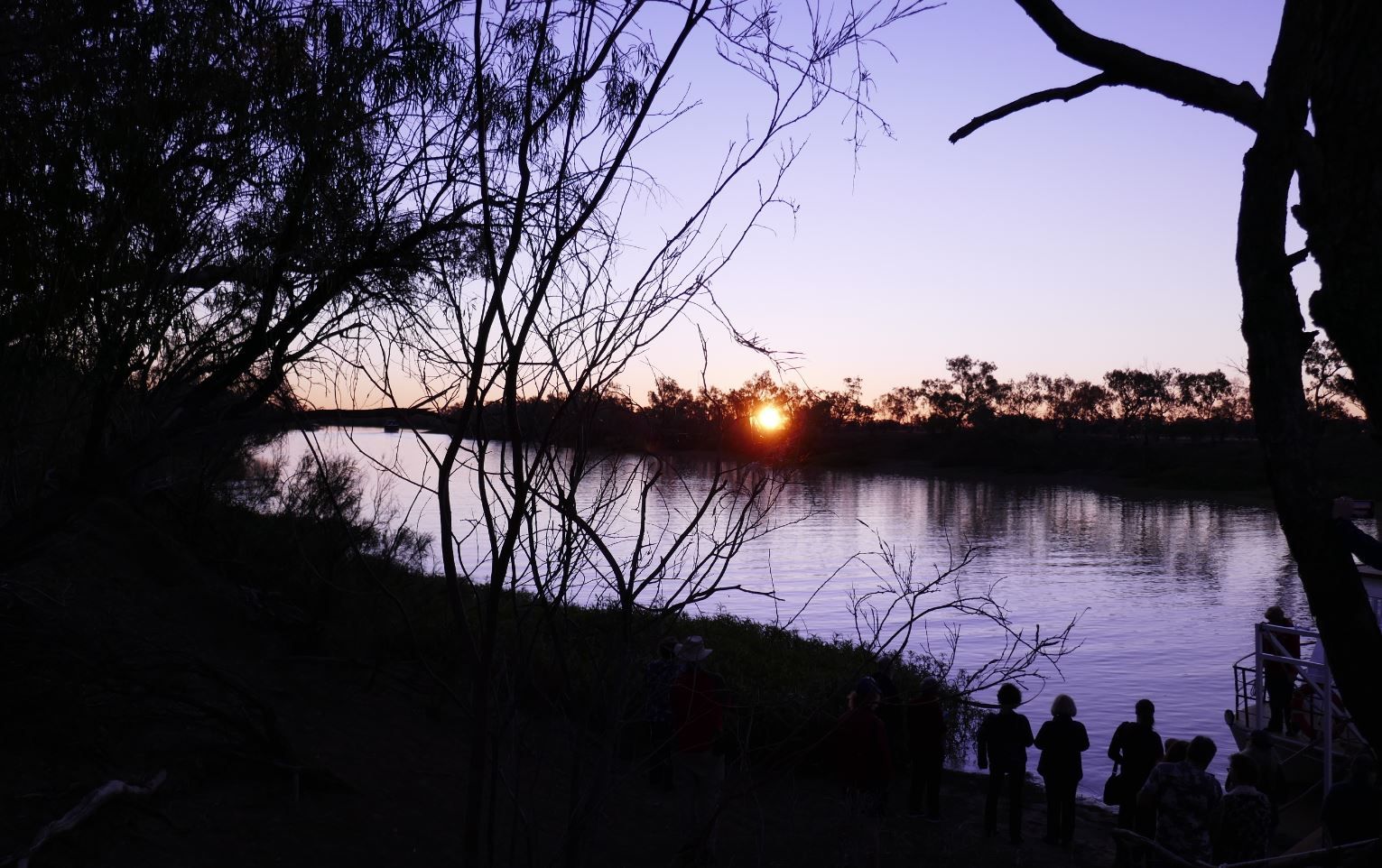
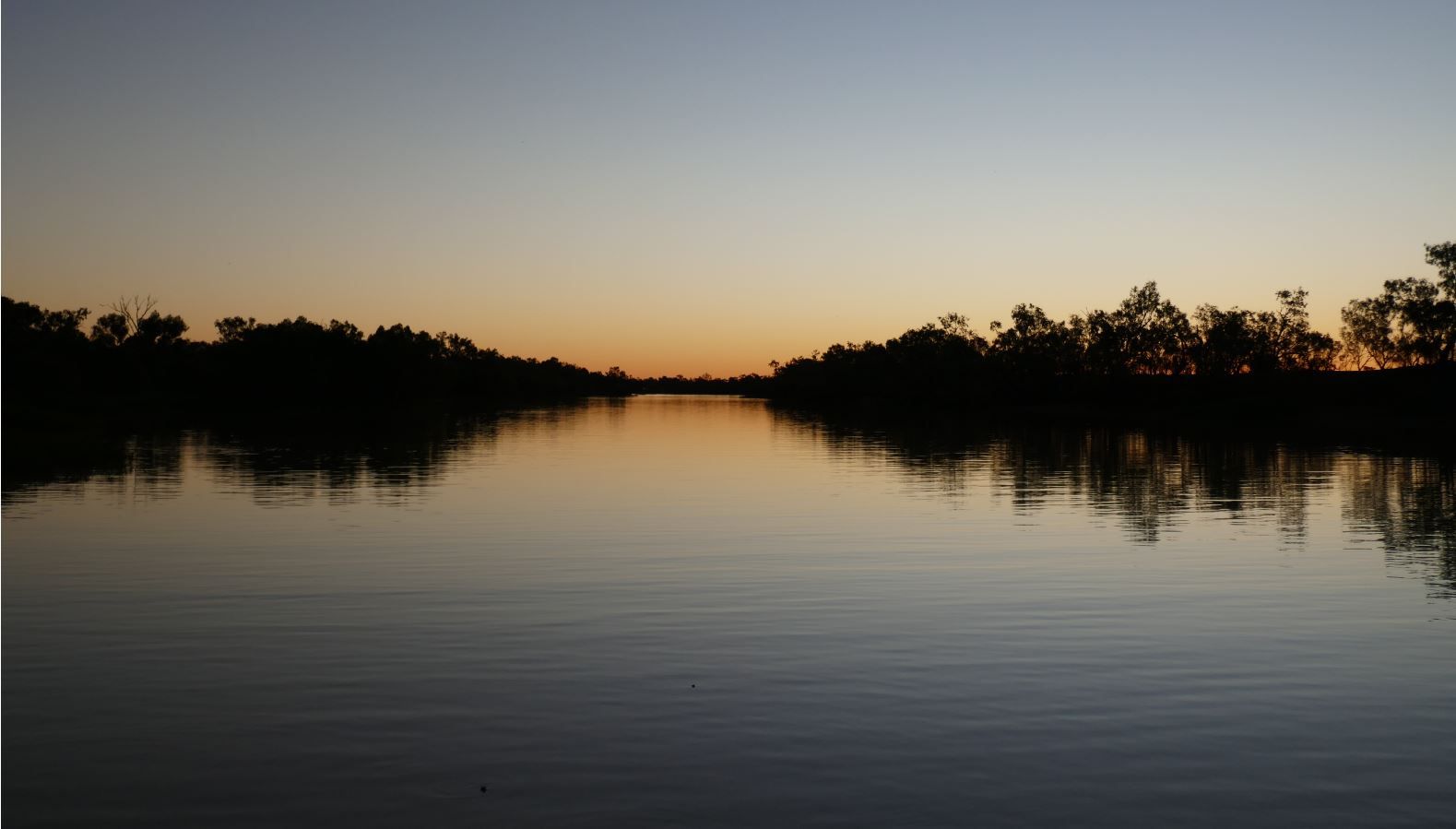
A few days later we stayed in Karumba, right on the edge of the Gulf of Carpentaria (marked on the map above). Karumba was a frontier town in the early to mid 1900s when more than 80 prawn trawlers headed out to the gulf.
It was hard and rough work and once the guys came back to town, hit the Animal Bar at the local pub which saw many brawls and fights, hence everything that could move had to be bolted down. These days, the town is small - the hairdresser comes just once every 6 weeks!
4WDs with boat trailers fill the car park and the pub is a little more gentile, with a few quirky murals painted on the walls. There is still a small fleet of prawn trawlers here which use spotter planes to assist in locating the schools of prawns.
Minerals are mined throughout the gulf country and even today is home to the largest zinc mine in the world.
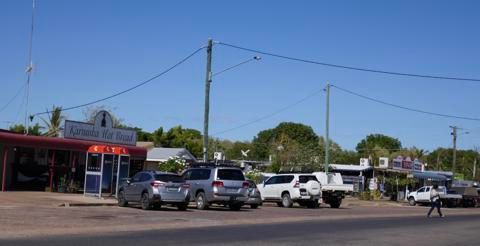
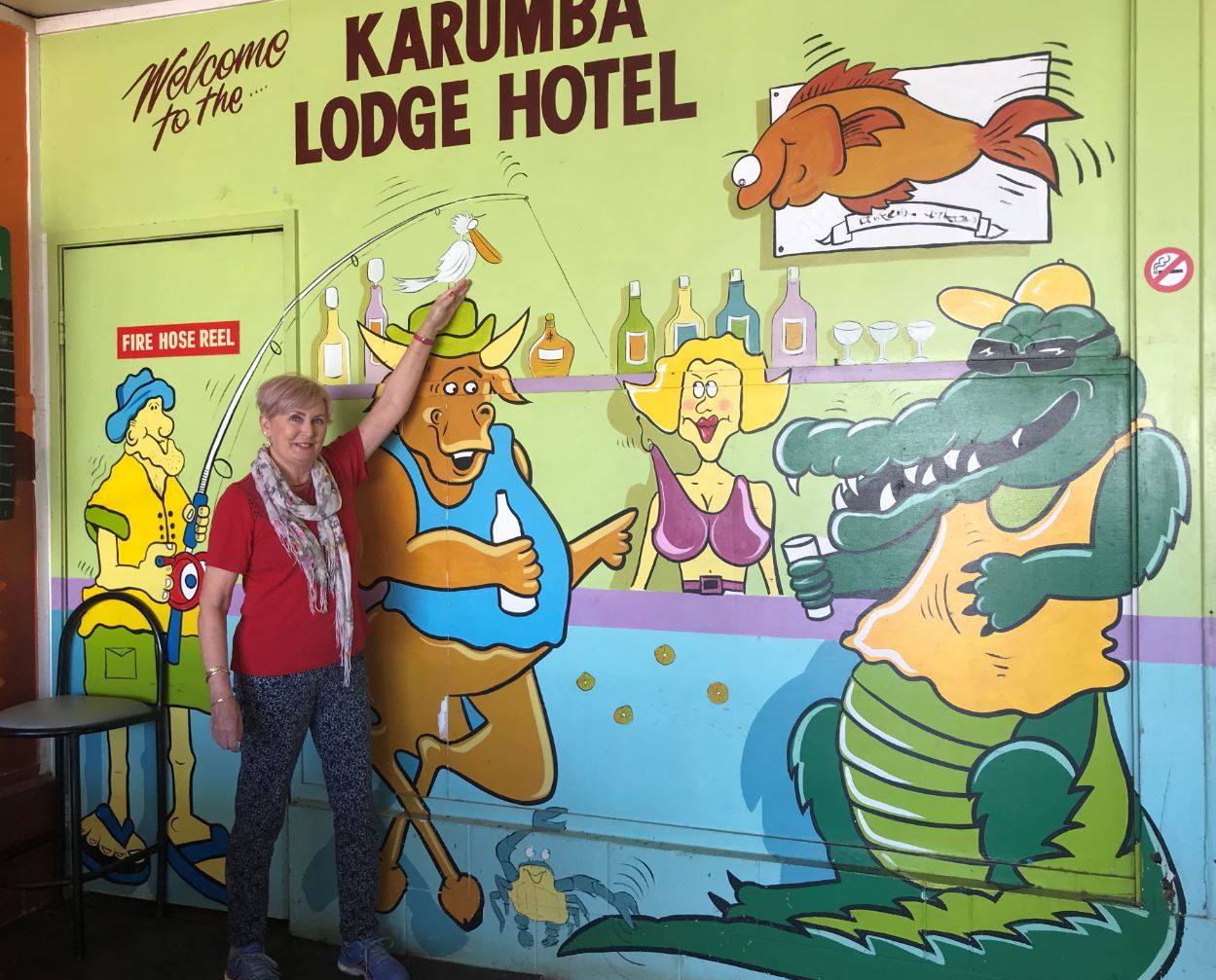
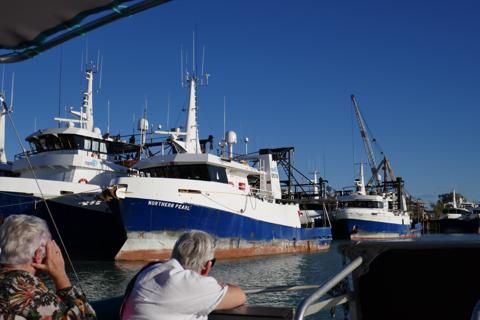
We could have been in Hawaii as we relaxed over our dinner watching the sunset from the outdoor dining room at our hotel – aptly named The End of the Road Motel.
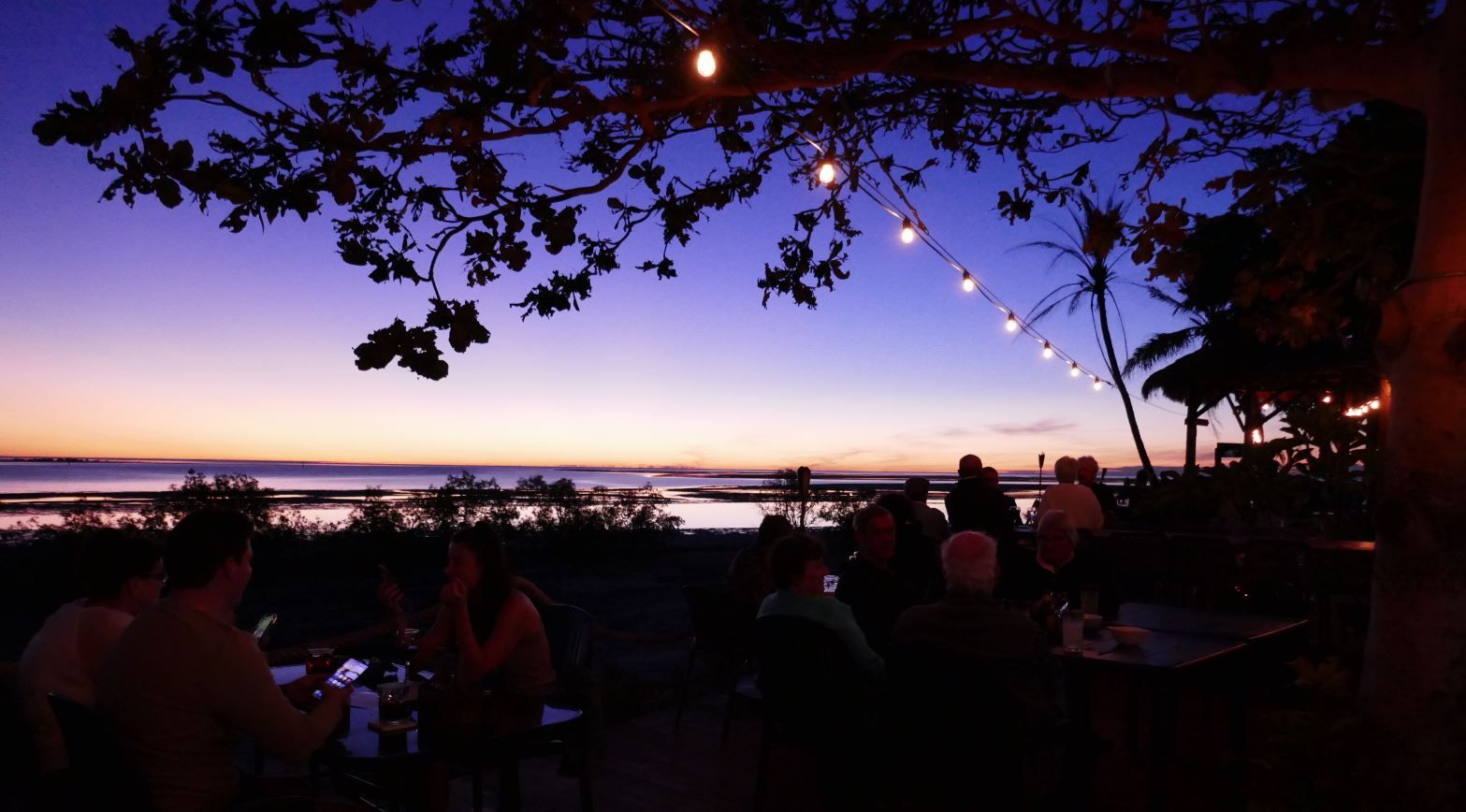
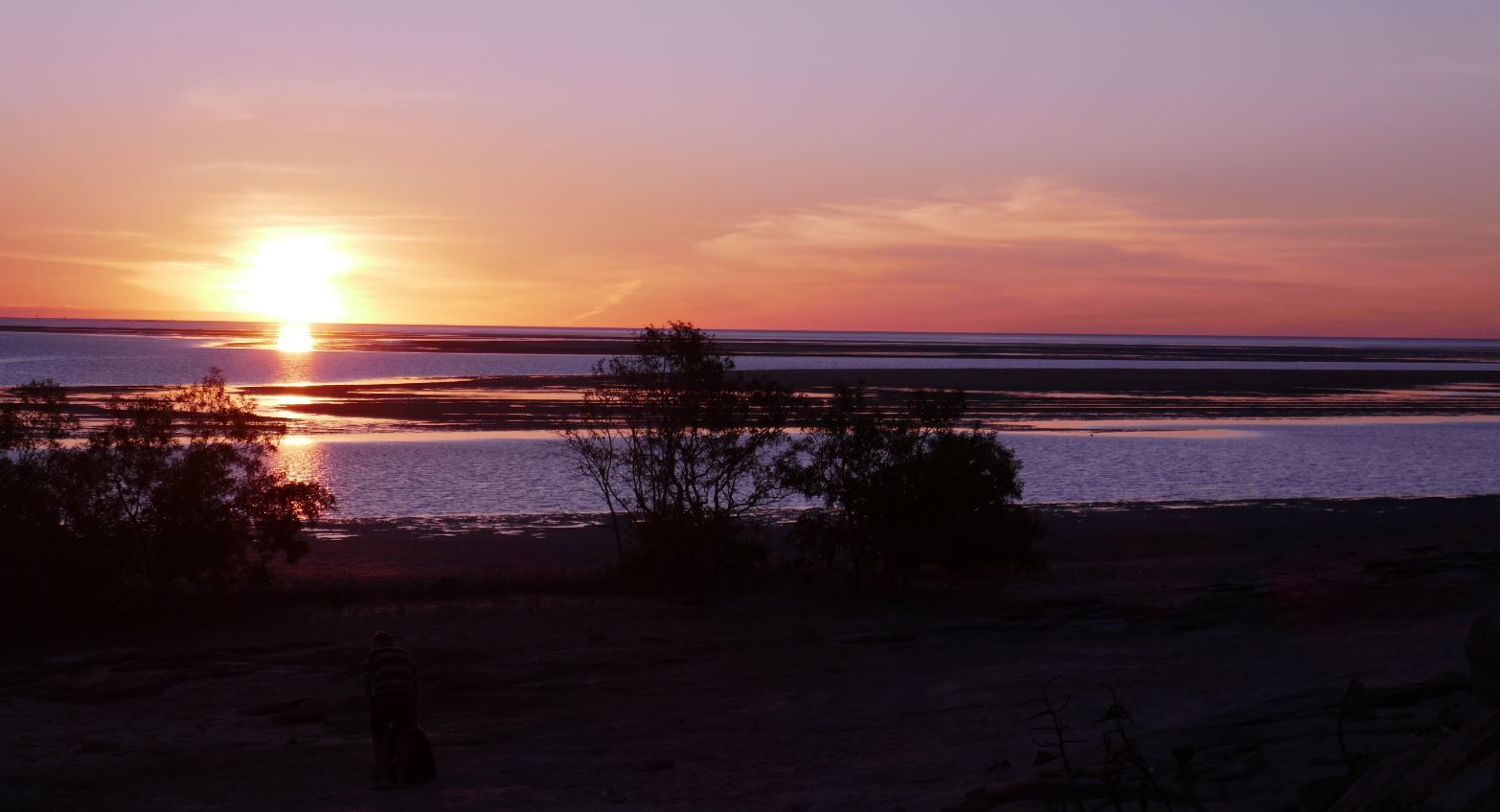
The following night we headed out into the gulf and we learned that the Gulf of Carpentaria is quite shallow with only one tide per day. Why is there only one tide per day? National Geographic explains:
Most of the tidal energy comes from the Indian Ocean. Hardly any gets through the little 150km gap between Cape York and New Guinea. So the Gulf is virtually a closed body of water.
It takes 12 hours for a water wave to slosh across the Gulf of Carpentaria from east to west – and another 12 hours to bounce off and come back. This 12-hour period is (coincidentally) the same as the time between two high tides (or two low tides). In the Gulf, the incoming tides ‘cancel out’ the outgoing tides, so there are no twice-per-day tides.
A single tide each day happens for exactly the same reason in the Gulf of Thailand, the Persian Gulf and the Gulf of Mexico.1
We motored out 7 kms to a sand island for a picnic dinner and another memorable sunset.
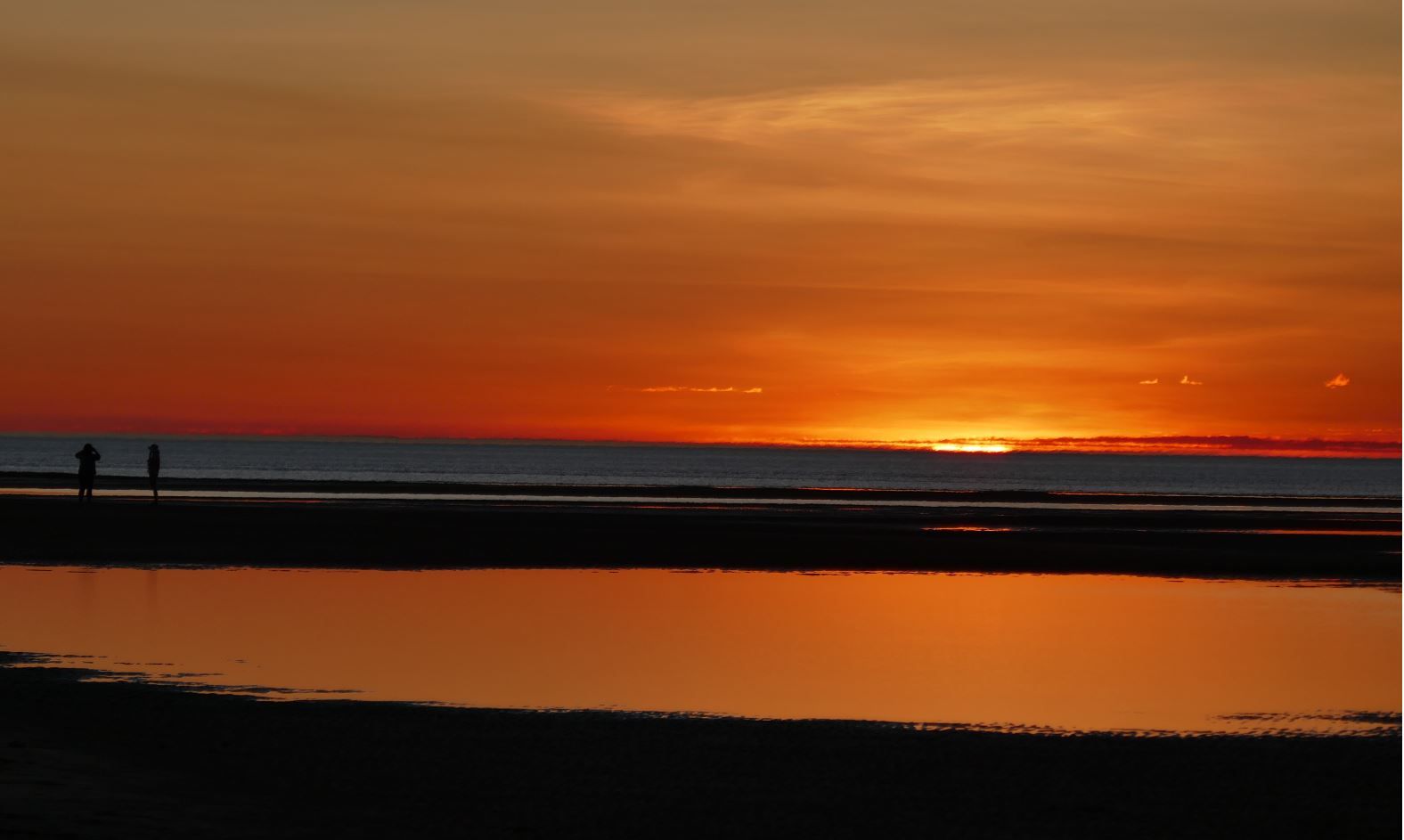
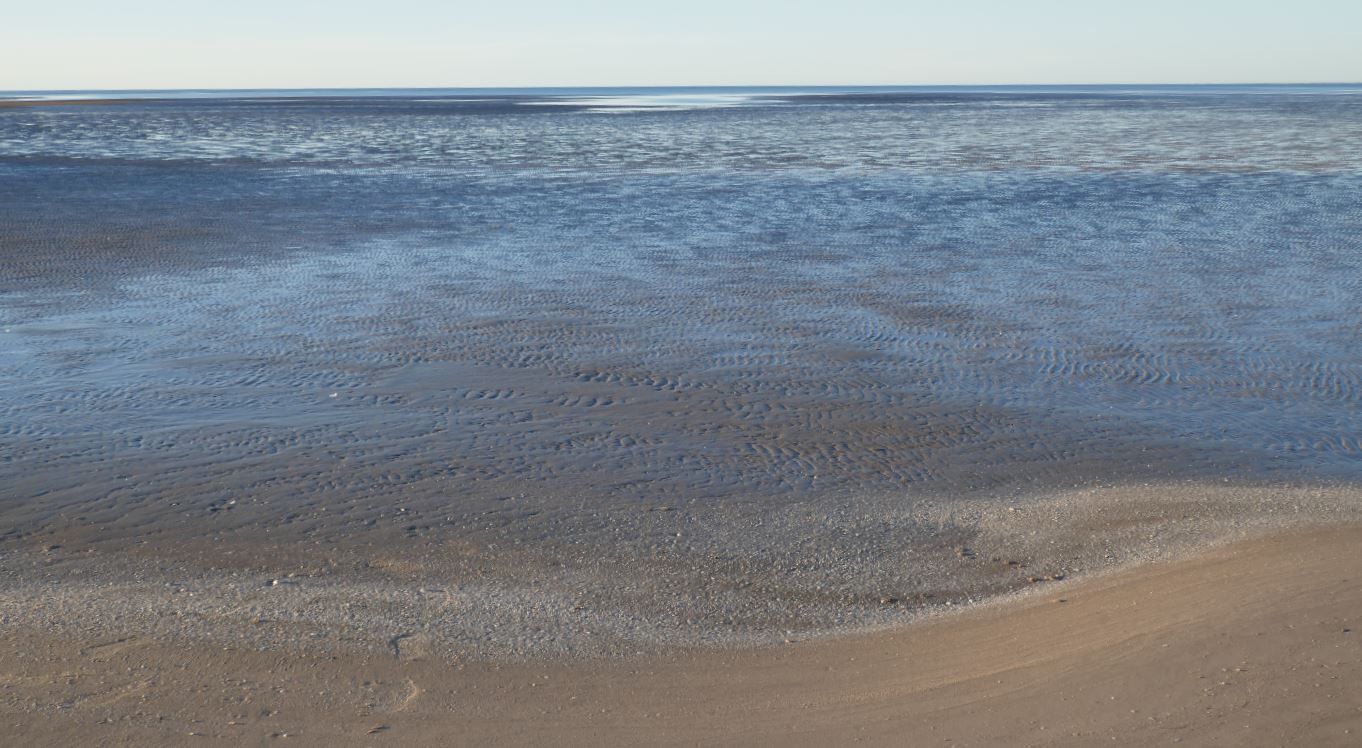
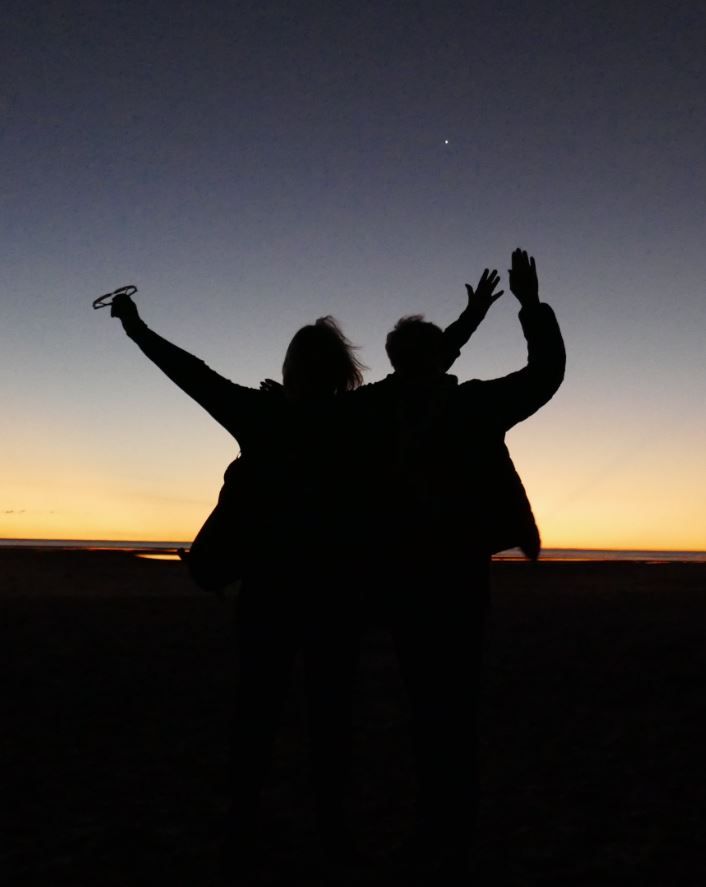
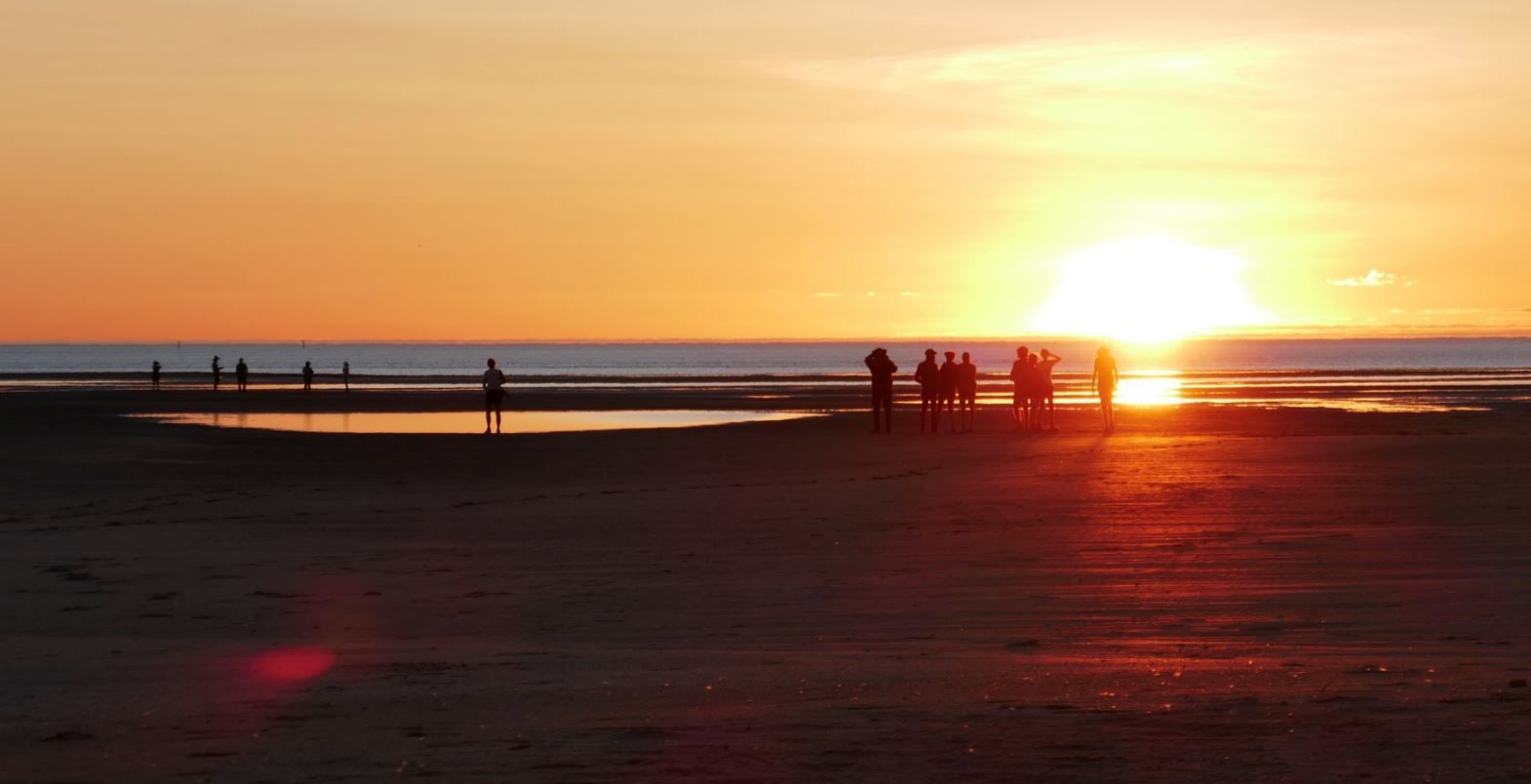
Credits
1 australiangeographic.com.au
All images are my own photos
